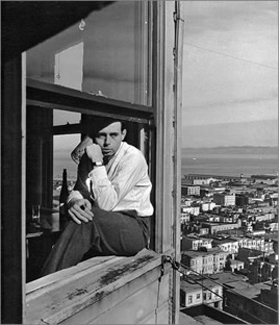Product Description
John Gutmann, D.O.S. Apology, Gelatin silver print, 1938


JOHN GUTMANN (1905-1998) USA
D.O.S. Apology 1938
Signed: 290.6, M 3 (in a circle), 5, © John Gutmann, SP, D.O.S. Apology 1938 (all in pencil on back of photo)
Framed size: H: 12 1/8“ x W: 14 3/8”
John Gutmann was a German-born American photographer and painter. After fleeing Nazi Germany to the United States, Gutmann acquired a job as a photographer for various German magazines. Gutmann quickly took an interest in the American way of life and sought to capture it through the lense of his camera. He especially took an interest in the Jazz music scene. Gutmann is recognized for his unique “worm’s-eye view” camera angle. He enjoyed taking photos of ordinary things and making them seem special.His work was shown in important galleries such as Castelli’s in NYC, Fraenkel in San Francisco, and the Centre National de la Photographie in Paris. After his death, Gutmann’s oeuvre was given to the Center for Creative Photography at the University of Arizona.
John Gutmann, D.O.S. Apology, Gelatin silver print, 1938
WILHELM SCHMIDT (b. 1880) Austria
PRAG-RUDNICKER KORBWAREN-FABRIKATION Austria
Vienna arts & crafts stool c. 1902
Oak, rattan
Illustrated: Das Interieure III “Wiener Kunst im Hause Exhibition”, Wien, 1902, p. 169; Prag-Rudnicker Korbwaren-Fabrikation Catalog, 1902/1903, No. 508. Korbmöbel, Eva B. Ottillinger (Salzburg: Residenz Verlag, 1990) p. 106, illus. no. 99, Moderne Vergangenheit Wien 1800-1900 (Vienna: Künstlerhaus, 1981) p. 271;
H: 19 1/2″ x W: 19″ x D: 17 5/8″
Price: $4,800
Wilhelm Schmidt was one of a number of avant-garde designers, along with M.H. Baillie Scott, Peter Behrens, and Henry van de Velde, who incorporated the traditional material of rattan, or wicker, into their furniture designs during the early part of the century. For this stool, the Viennese designer used rattan in the much same way that a furniture maker of his day would have used upholstery on seating furniture. It provides a supportive, yet yielding and therefore comfortable seat.
CHARLES CATTEAU (1880-1966)
BOCH FRERES KERAMIS La Louviere Belgium
Tulip vase c. 1930
Glazed earthenware
Marks: “Keramis” Made in Belgium , D. 2524 B, 945
H: 10 1/4″ x D: 6 1/2″
Charles Catteau could be regarded as one of the most versatile ceramic artists of his generation, especially for the style of Art Deco. Catteau advanced the forms, techniques and decoration of modern ceramics, creating an exceptionally original, new and decorative genre.
Hired as a ceramic decorator in Ecole Nationale de Sèvres from 1903 to 1904, he began producing designs that were rather traditional, based on the observation of nature, and showing the influence of Japonisme, characterized by pure lines and meticulous details. From 1904 to 1906, he worked in Nymphenburg Porzellan Manufaktur near Munich, a factory specializing in new hand painting procedures under a slip, as well as Art Nouveau.
In 1907 he finally moved to Louvière in Belgium where he was promoted to head of the decoration department at Boch Freres Keramis at the age of 27. This is where most of his exceptional talent came to the fore especially during the period between the two World Wars. Influenced by the great creative art movements of the time (Africanism, Japonisme, Cubism, Abstraction) and his observation of nature gave him inspiration for his designs, with the integration of plants, stylized animals and geometric motifs. The international avant-garde movements were also an influence leading to his use of purely abstract, geometric designs and intense colors. Charles Catteau was incredibly resourceful and explored various harmonies of form, techniques, designs, colors, shades, topics, variants and influences. In this way Catteau became a representative par excellence of Art Deco designs, giving it his personal touch. He was instrumental in introducing technical innovations during the 20’s and 30’s to aid mass production of ceramic products and expand availability of affordable products. During difficult times in Europe, he created vivid, colorful, original and uplifting ceramic wares.
Charles Cotteau motto was “Art for All” and he also taught decorative painting at the School of Industrial in Louvière. In 1925 he obtained international recognition in the exhibition of Decorative Arts in Paris. which helped raise the profile of Boch Freres. He remained at the company until he retired to Nice in 1946 .
